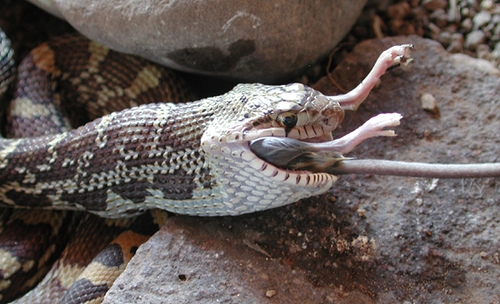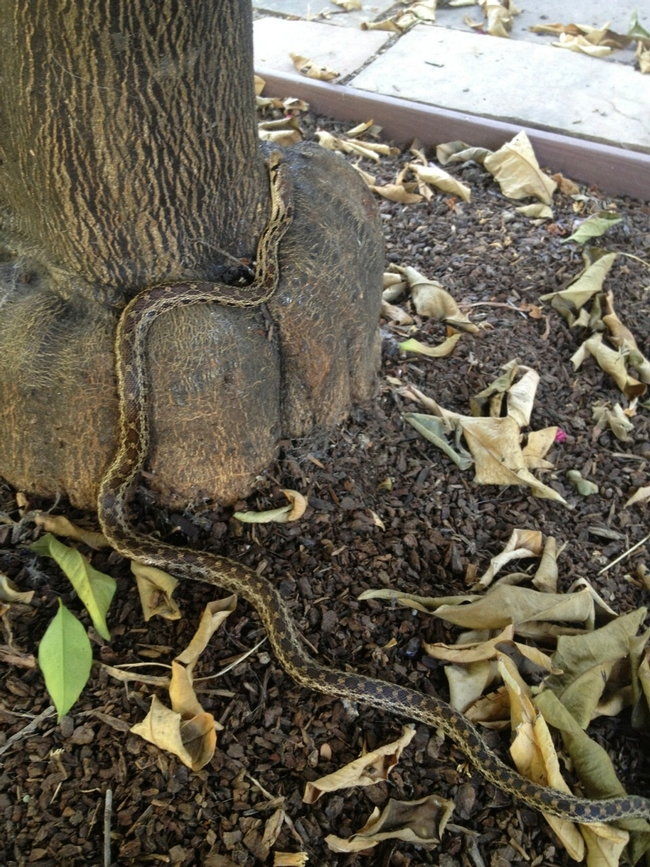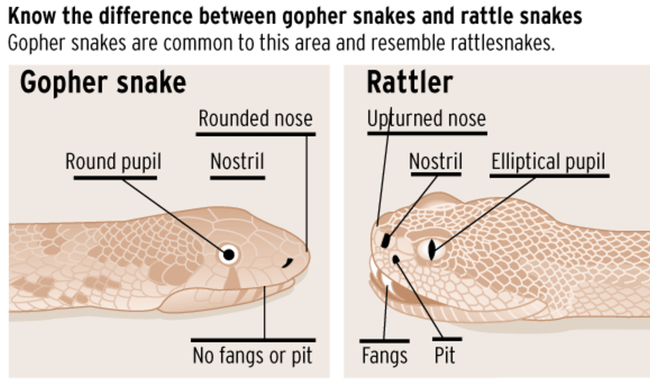Gopher Snakes (Pituophis catenifer), known as a constrictor snake, are one of the most commonly seen snakes in California. Mainly active during the day, they are active after sundown on hot days. They are often observed crawling across trails and roads, especially in the morning and evenings when daytime temperatures are high. They live in diverse habitats and are regularly seen around human residences, including suburban backyards and in agriculture commodities as they are attracted to the rodents which thrive in those areas. The gopher snakes help growers control their pest problems by preying on rodents, rabbits, and birds that would otherwise destroy or ruin crops and yields. When the weather turns hot, they hunt during the night and rest on warm rocks or pavement during the day. They hibernate during the winter and are out and about between April and October, however in Southern California because of the warm climate their presences is more consistent.
Gopher Snakes are large and heavy-bodied reptiles - reported to reach 9 feet (275 cm) in length, but 4 feet (120 cm) is more common. The underside is creamy or yellow, often with dark spots. Unfortunately, this harmless and beneficial species is very often killed out of fear that it is dangerous or that it is a rattlesnake. Since the patterns on their backs are similar to rattlesnakes and because they coil, vibrate their tails, and even strike when threatened. Other differences include: gopher snake tails taper to a thin tip and lack rattles; rattlesnake tails always have rattles (or immature buttons), unless the rattle has broken off, gopher snake heads are usually narrow, while rattlesnake heads are always triangular, and gopher snake eyes have round pupils, while rattlesnake pupils are vertical.
So, if you see a Gopher snake in your grove, its best to leave him alone so that it can contribute to your Integrated Pest Management plan.



